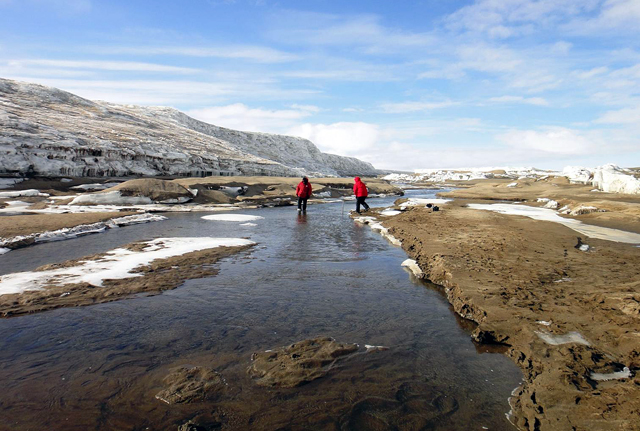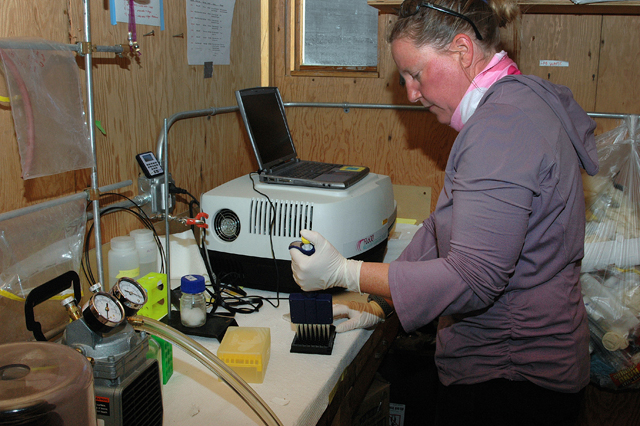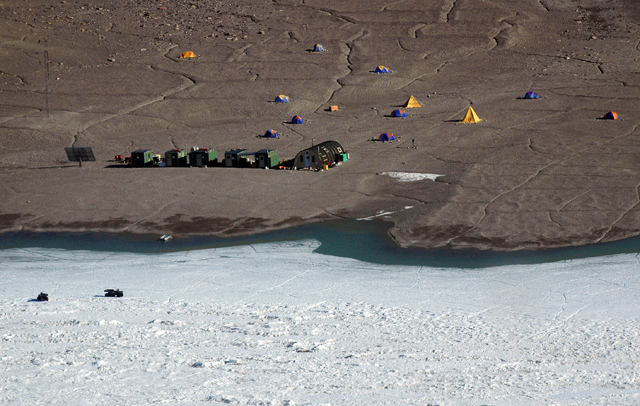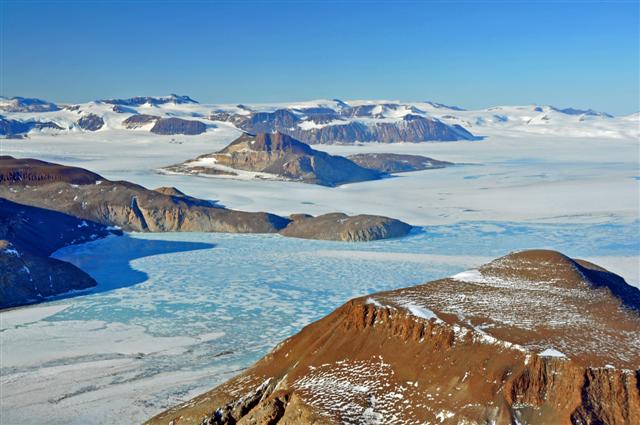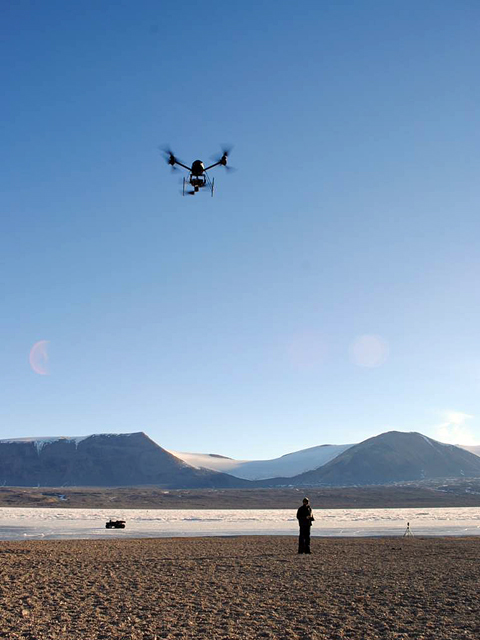Fresh waterCotton Glacier stream offers insight into evolution of dissolved organic matterPosted February 4, 2011
The time-lapse video on Marco Tedesco’s The creek is now a river — a stream of cold blue water running across the top of a glacier in Antarctica. “It’s absolutely gorgeous. … This thing is massive. A few years ago it was about 16 kilometers long,” said Christine Foreman The “thing” is a supraglacial stream that seems to form every austral summer on Cotton Glacier in the McMurdo Dry Valleys An incredible dump of sediment from the surrounding mountain range collects and accumulates on the glacier. The darkened surface readily absorbs the summer sun, helping create a meltwater river on Cotton Glacier, which flows into the valley between Sperm Bluff and Queer Mountain. “You don’t see features like this on the other glaciers around here,” said Foreman, an associate research professor at Montana State University-Bozeman Specifically, she and her colleagues are interested in the evolution of dissolved organic matter (DOM). Though microscopic in scale, DOM represents the largest reservoir of organic material in the world. In more familiar terrestrial environments, it comes from things like decomposed leaves and trees, eventually washing into streams. There’s an obvious dearth of such organic matter in Antarctica, though DOM is present in the streams of the Dry Valleys, such as the meltwater that flows from the Canada Glacier in the Taylor Valley. It shares a complex chemical structure — referred to as humic material — that could be found elsewhere in the world. Not so in the meltwater that flows across the Cotton Glacier. “It’s the only system in the world that we know of that doesn’t have [humic material],” said Yu-Ping Chin Eventually, after a time, the DOM from the Cotton Glacier chemically changes to resemble other forms of carbon. But the primordial nature offers the scientists a way to understand how DOM forms from scratch. “We’re trying to understand the evolution of the organic matter over time from a chemical component, and then how the microorganisms actually use it,” Foreman said. This is the second and final field season for the project. The researchers are based at a permanent field camp near the shore of Lake Fryxell, one of several ice-covered lakes in Taylor Valley. The location allows them access to the “standard” meltwater system from Canada Glacier, located up the valley. The Cotton Glacier is a 40-minute helicopter ride away. The camp includes small labs — plywood buildings — that help the scientists conduct experiments in the field. That’s key to this sort of research because they need to analyze the samples while the material is fresh and before the DOM chemically evolves. “If we just ship it home, we would have missed it,” Foreman explained. “It would have sat for two months before we got it, and things would be totally different. Being here on the ground, being able to collect [the samples] and come back here to the field camp and study them, is a huge benefit to us.” The evolved DOM is not just food for microscopic critters. The humic material also serves as a type of sunscreen for many types of organisms, absorbing ultraviolet light. “For the Cotton it just doesn’t exist,” Chin said. “You hit the reset button every year, so there is no sunscreen.” That could be a problem, especially in the Antarctic, where depletion of ozone over several months each year removes the natural atmospheric filter for UV radiation. Chin said that some of the organisms have different ways to cope in the absence of humic-based sunscreen. “These organisms, you have to give them credit. They develop adaptive strategies. Producing pigments is one adaptive strategy to deal with this UV radiation,” he explained. The multidisciplinary team makes a variety of measurements during its two months in the field to learn more about the Canada and Cotton systems, from recording stream acidity to the amount of dissolved oxygen in the water. The team is also interested in the physical processes of the supraglacial stream on the Cotton Glacier. Tedesco, with The City College of New York Satellite imagery from the NSF-funded Antarctic Geospatial Information Center “We rely a lot on the satellite imagery from Paul Morin, which is very helpful, because we get a satellite image every four days of what’s going on,” she said. 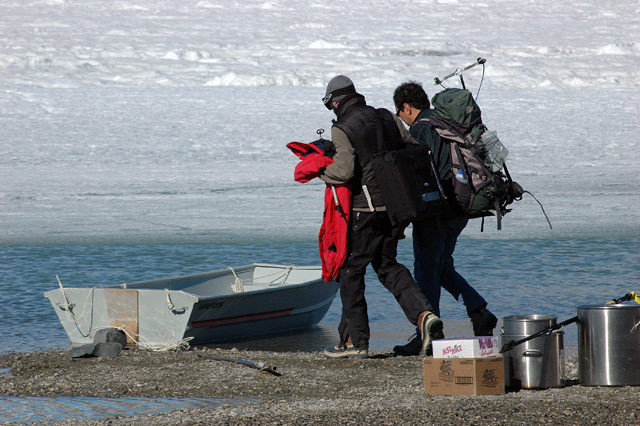
Photo Credit: Peter Rejcek
Members of the DOM team prepare to cross open water to the frozen surface of Lake Fryxell.
Foreman and other team members work on the microscopic critters in the ecosystem. A vacuum-looking instrument captures air-borne bacteria onto filters that can be studied in the lab. Other organisms settle onto glass slides in the water, which can be examined under a microscope to determine the types of bacteria that are present. “We want to do [this project] from an ecological perspective. We want to understand the whole thing, not just taking apart one component,” Foreman said. “That’s why our interdisciplinary collaboration works so well. We have expertise in different areas, and we can synergize that and bring in outside experts when we need them. “This project has bigger implications than just this one system.” NSF-funded research in this story: Christine Foreman, Montana State University, Award No. 0838970 |



For USAP Participants |
For The Public |
For Researchers and EducatorsContact UsU.S. National Science FoundationOffice of Polar Programs Geosciences Directorate 2415 Eisenhower Avenue, Suite W7100 Alexandria, VA 22314 Sign up for the NSF Office of Polar Programs newsletter and events. Feedback Form |

